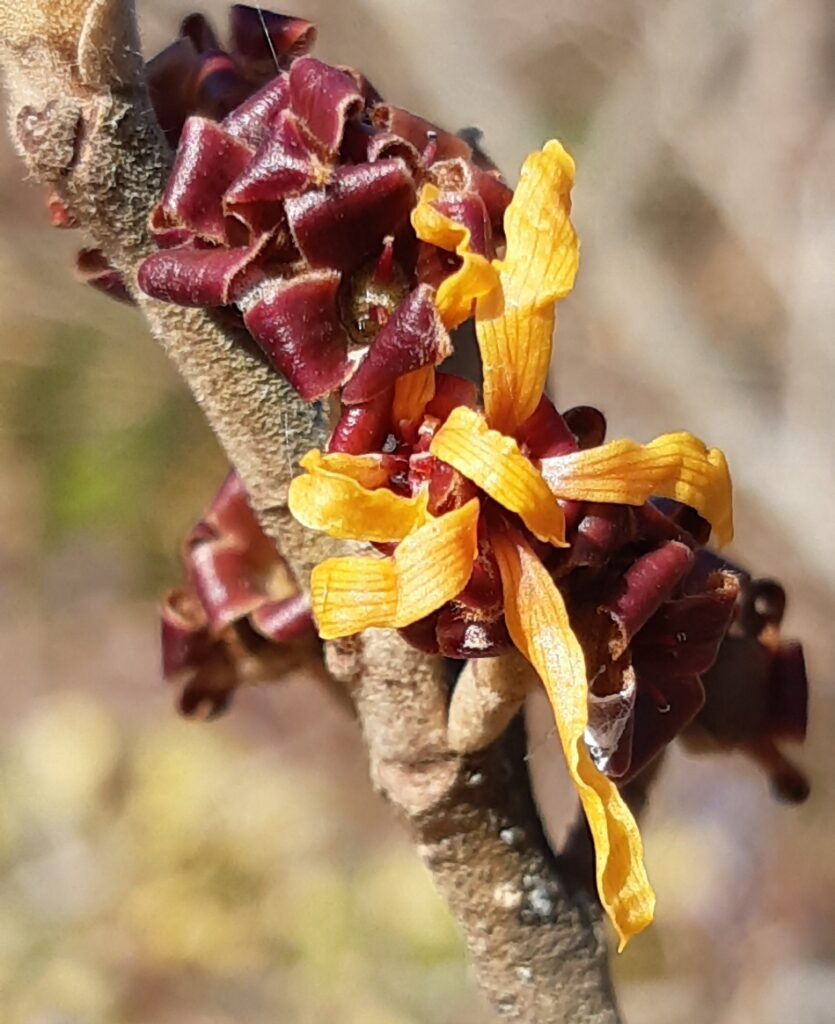
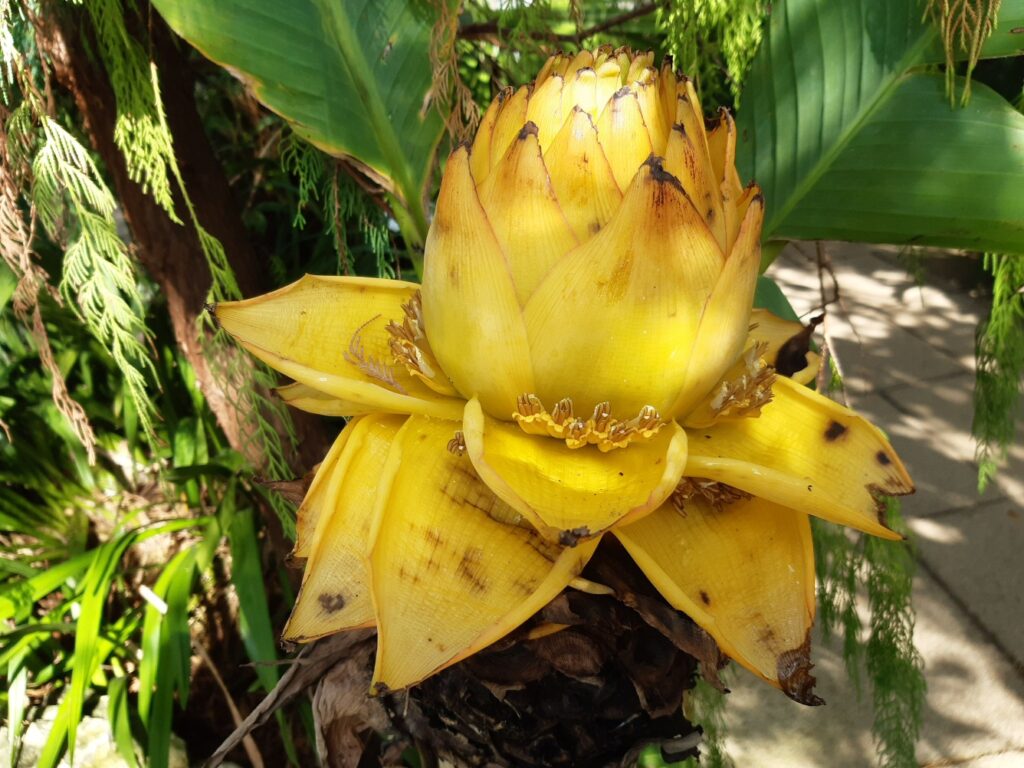
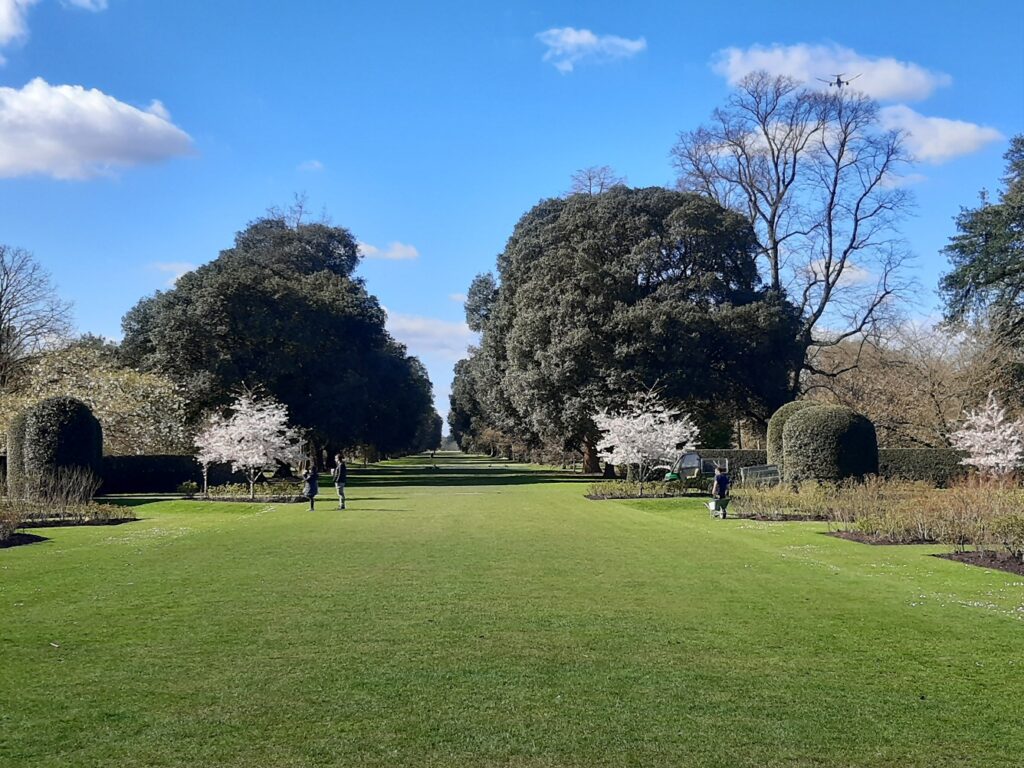
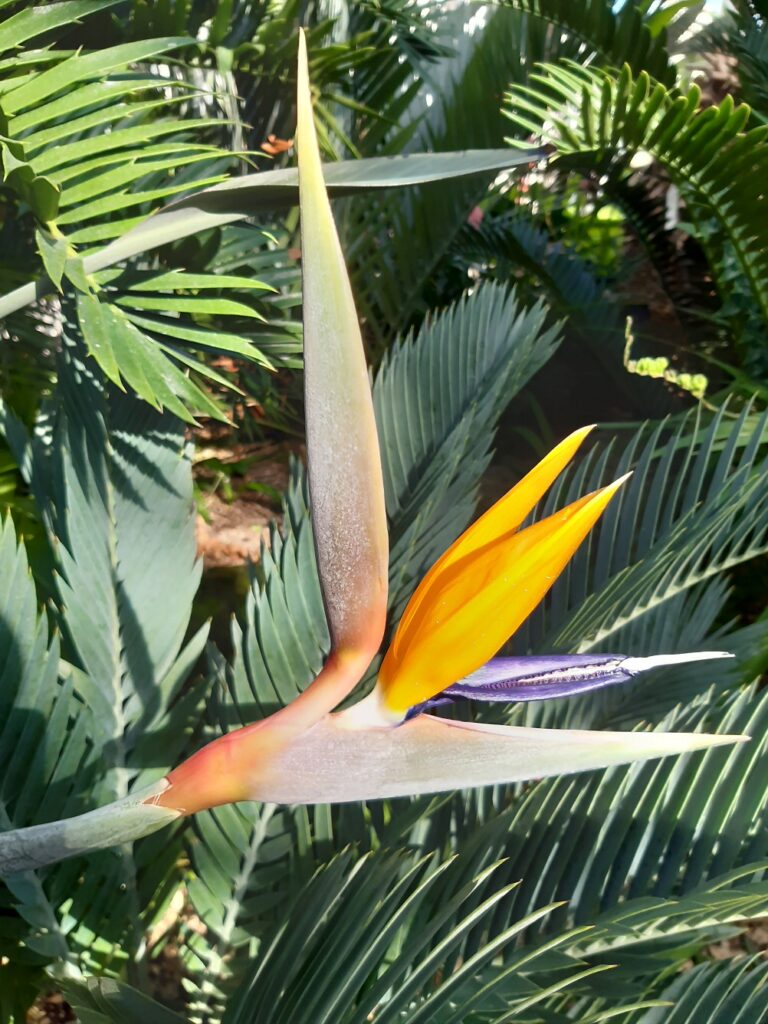
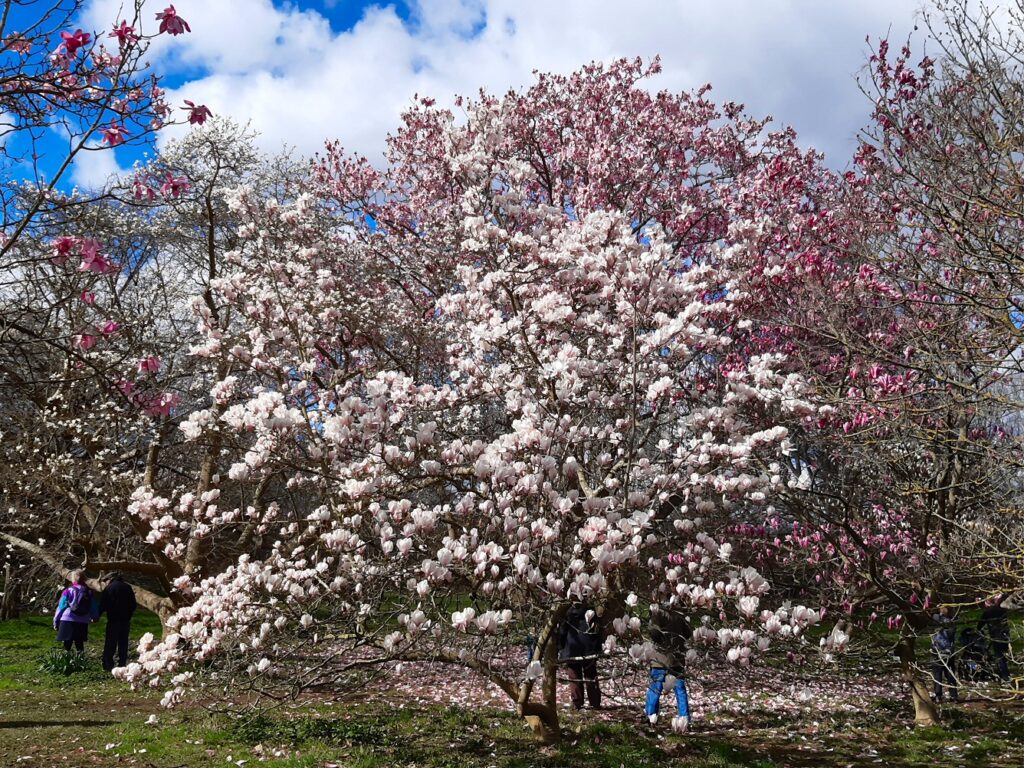





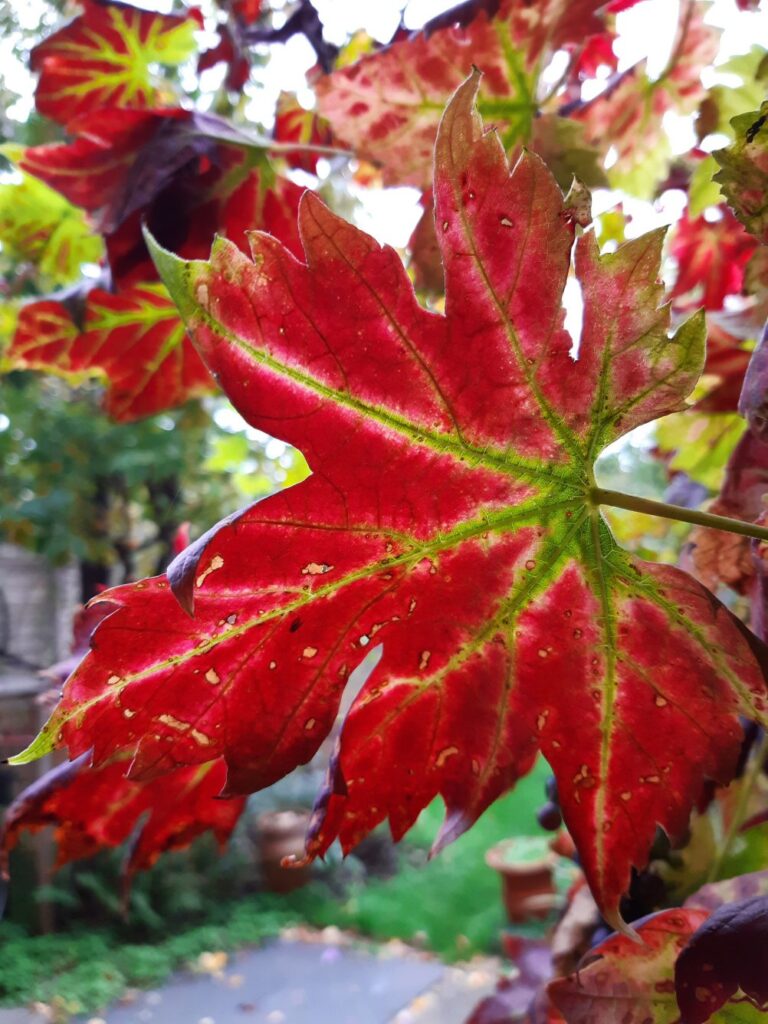


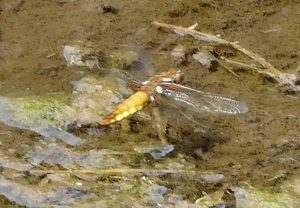
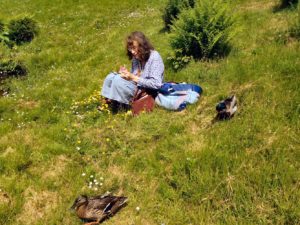
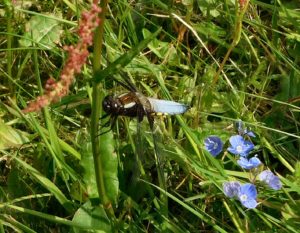

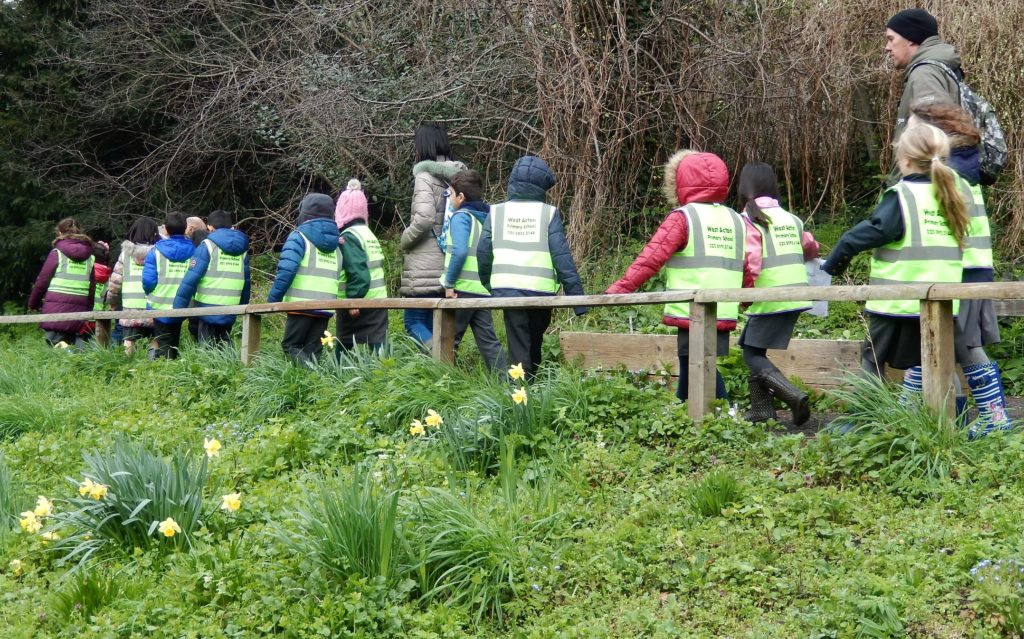
We set to work clearing the patch of meadow in front of the hut: it usually has a mix of wild flowers to welcome visitors, and that’s what we plan for it this year. We hoed out the weeds, raked out the stones, and sieved the earth to create a smooth seedbed.
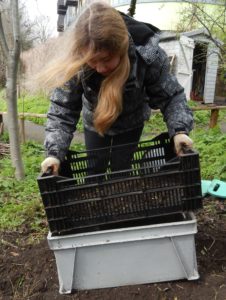
Being at the front of the reserve, we got to see everyone who came in, and there were plenty of visitors!
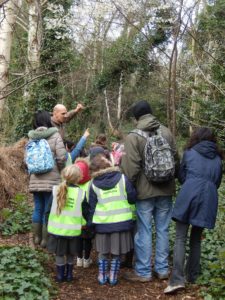
The reserve has 3 main purposes – to conserve nature, to educate children about nature, and to give the public a place to experience and enjoy nature. It’s a pleasure when all of these can be seen happening at once!
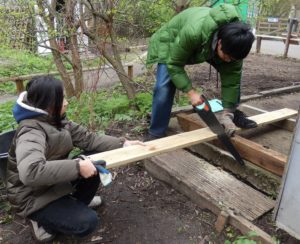
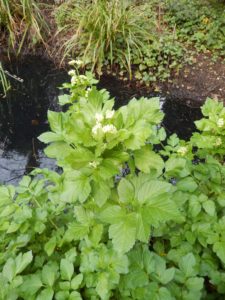
Spring is rushing along with no time to lose. Areas that were bare a moment ago are covered in fresh green leaves. The water plants seem to be especially quick: the Iris blades are feet high already.
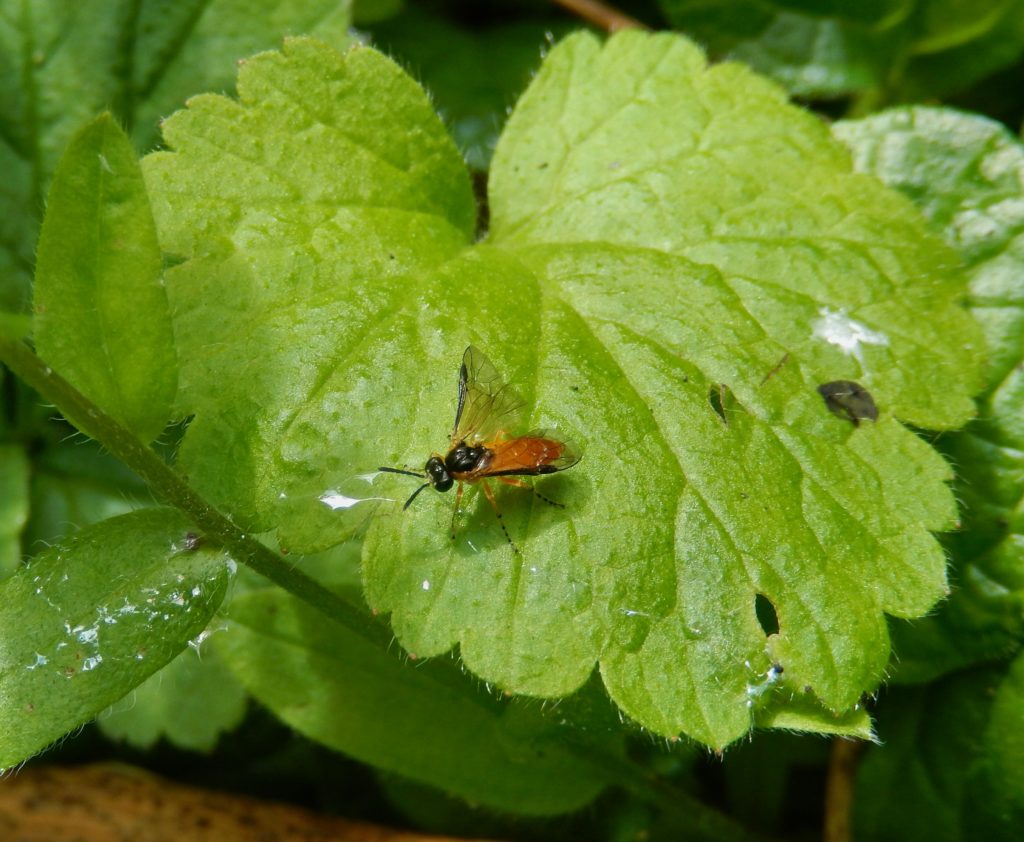
A miniature drama unfurled in my garden this morning, little streaks of orange and black sparkling in the sun as they chose places to land and sun themselves. They seemed to be newly-emerged, as they immediately stretched out their wings on landing: and if you look closely, you can see that the wings are not fully deployed, but are still soft and need to be puffed out quickly before they harden. If so, it’s remarkable that these little flies can take to the air in that condition.

La Belle Noiseuse, the beautiful nuisance, roughly. Not the female sculptor in Jacques Rivette‘s 1991 film, starring Emmanuelle Béart, but a small sawfly. It’s a glorious little insect, shining in the sunlight, its deep orange-ochre abdomen contrasting with its black thorax and head, its legs elegantly banded black on orange, giving it a slightly waspish look in flight. (Indeed, it is presumably a Batesian mimic of wasps, benefiting by looking as if it might sting.)
But its nuisance value does not lie in stinging, but in its caterpillar-like larvae, which devour the leaves of gooseberries and can defoliate whole bushes.
Still, it’s a splendid sight.
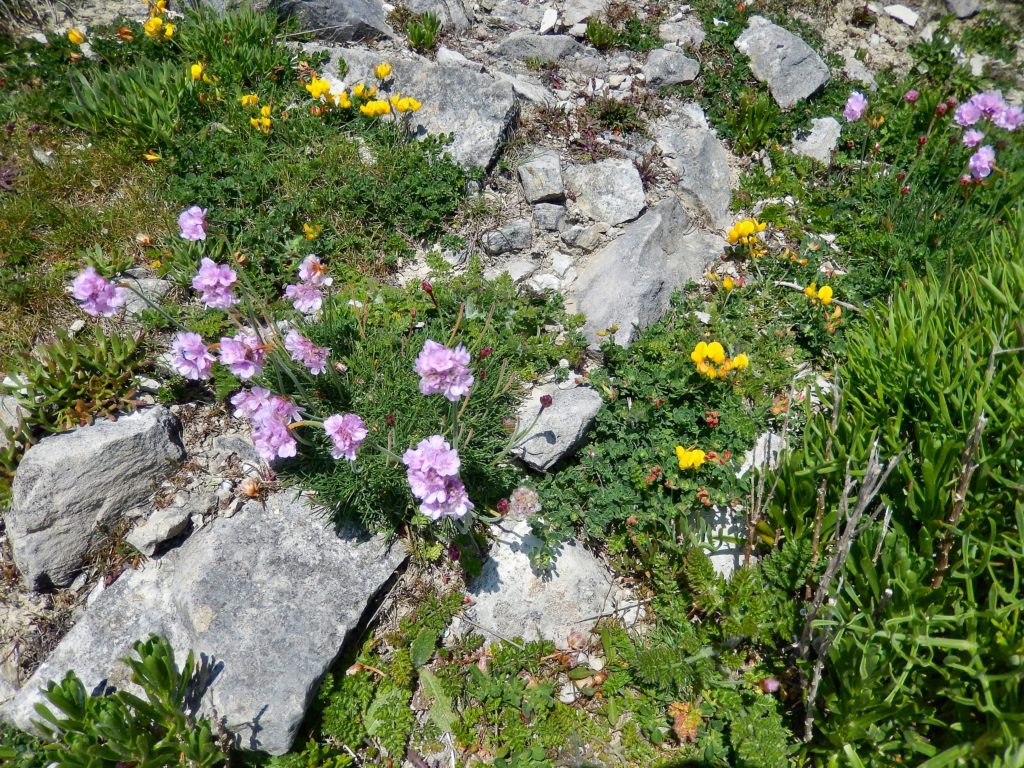
We had a fine airy walk in brilliant sunshine, cooled by a stiff northerly breeze, around the tip of the Isle of Portland. Underfoot was fine maritime turf and massive Portland limestone, dotted with tufts of pink Thrift and yellow Birdsfoot Trefoil. The sea sparkled blue and silver around a wooden sailing ship with four triangular sails. A pair of Gannets flew effortlessly down the wind, tilting their long black-tipped wings.
To the south, the fearsome tide-race splashed ominously as if some Odyssean sea-monster (Charybdis and its whirlpool?) lurked beneath: the tide there runs faster than a yacht can sail, one way and then the other. Jonathan Raban describes it wonderfully in his book Coasting, the feeling of rising alarm and then, going for it, being shot like a cork from a champagne bottle through the swirling water.
A Rock Pipit, its beak full of insect grubs, called urgently as we strayed too close to its nest. A Razorbill, improbably proportioned like a fat impresario in black tie and tails, flapped by on small rapid triangular wings.
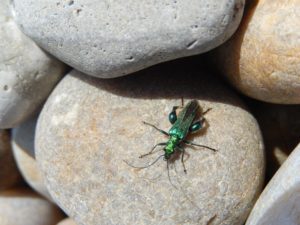
We saw few insects – some bumble bees, some handsome Thick-kneed Flower Beetles glowing iridescent green on buttercups, later on one male perched on a pebble on Chesil Beach
.
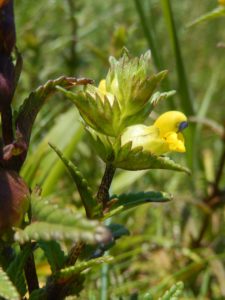
The best flower of the day was probably the Yellow Rattle, an odd-shaped parrot-beaked yellow flower with spiky leaves. It’s a member of the Figwort family (like the Eyebright, whose growth habit is similar though smaller), and a hemiparasite of grasses: an important plant, as it weakens the grasses, keeping them low and allowing in a wealth of other flowers. It was once common in our meadows and permanent pastures, but fertilizers and ploughing have destroyed over 95% of these, and Yellow Rattle and the rest of our grassland flowers are now all desperately uncommon.
Overhead, two Peregrine Falcons slid through the air, circling without visible effort. A pair of Ravens came by. Standing at the top of the western cliffs, Fulmars flew out from their cliff nests, circling on stiff wings.
A little patch of Scarlet Pimpernel by a gate again reminded me of how this once common weed of cultivation (and sand dunes – presumably it was pre-adapted to disturbed ground) has declined.
We left Portland and drove down the hill to the Chesil Beach, struck as everyone is by the enormous shingle bar that stretches miles from Abbotsbury to the Isle of Portland, forming a bar with the Fleet lagoon behind it.
A few handsome Sea Kale plants clung to the lower part of the landward side of the shingle, including this one on the edge of the car park. It is the ancestor of the domestic cabbage in all its varieties, from Broccoli to Brussels Sprouts, Kale to Cauliflower. It is itself (obviously) edible, though as a now-scarce maritime plant one wouldn’t want to pick any of it at all often.
Nearby, the ancestor of another valuable food plant, the Sea Beet, origin of Sugar Beet, purple Beetroot, and Spinach Beet. The wild plant too is edible, though the leaves are small, thick, and leathery!
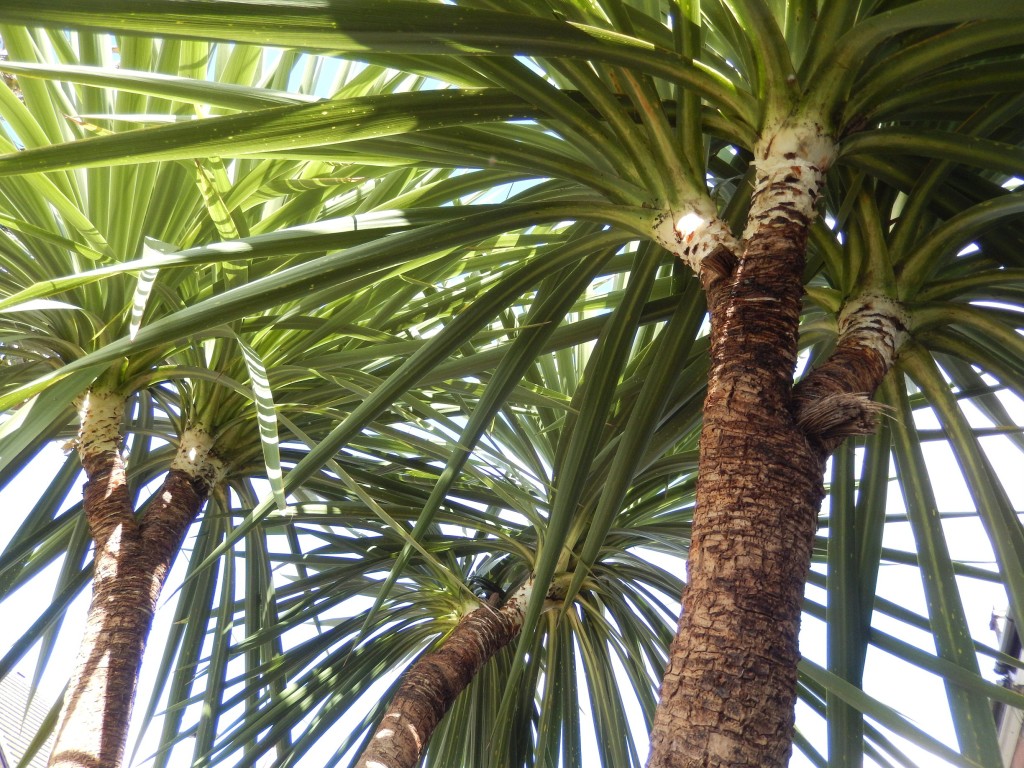
When I moved house, I dug up a small but strong Cordyline that I had planted in the garden, and brought it with me. It was a couple of feet high. I stuck it in the ground and more or less forgot about it: it didn’t seem to do much except grow a little bit taller each year. It had two cylindrical trunks, each of which acquired a few new leaves every year, forming a palm-like tuft. The old leaves remained as a multiple sheath around the trunk until they eventually fell off in a storm or I pulled them off, following the Fibonacci spirals from the bottom up.
About 10 years ago, one of the trunks decided to branch; then the plant settled down again, and the three trunks just crept slowly skywards each year.
Two or three years ago, the plant suddenly put out a flower head, covered in a mass of tiny whitish flowers. The head slowly dried up but did not fall; it was attached to an extremely strong fibrous stalk that emerged in what seemed to be a random way from the tuft of leaves. A year later, another flower head emerged. With difficulty I managed to cut the old flower head off near its base: being left to dry had hardened it, but nothing else.
Now, after this year’s growth and an hour carefully pulling off a lot of leaves from the bottom of each tuft, no fewer than 8 growing points – separate tufts – are visible. And the mystery of where the flower heads come from is revealed: they spring from the angle or axil where a trunk decides to fork into two branches. There’s a nice obvious cut stump of a flower head on the right of the photo.
As well as I can now deduce, the number of growing points went like this :
Year: Tips: Branching events: Flower heads:
1 1
3 2 1
8 3 1
17 4 1 1
18 6 2 2
19 8 2 0 so far
The production of leaves seems to be increasing directly with the number of growing points. The old trunks do seem slowly to thicken, despite giving the impression of growing only at the tip, i.e. there is some secondary (sideways) growth as well as primary growth at the apical meristem. Cordyline is, curiously, a woody monocot, in the Asparagus family.
Everyone who has ever owned an Apple tree knows the problem. Monday: Apple Pie. Tuesday: Stewed Apple. Wednesday: Oh, Stewed Apple again, no time for baking. Thursday: Apple Crumble. Friday: Stewed Apple. Saturday: Freeze some stewed apple. Sunday: Roast Pork with Apple Sauce. And so on with Apple Charlotte, Apple Cake, Roast Chicken with Apple Sauce, etc.
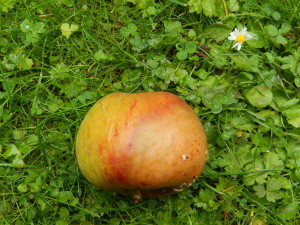
Yes, it’s windfall time. The wind, and the accursed Codling Moth, ensure a steady supply of apples on the lawn. They look warm and welcoming on an autumnal morning. The only thing is…
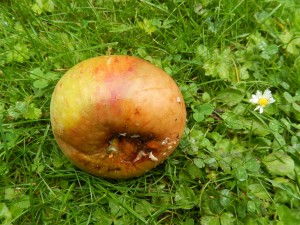
that when you get up close to them, or pick them up, they’re invariably half rotten, split, covered in little black holes, already home to a nest of woodlice nibbling away at the underside, already being gouged by little brown slugs, or, as I said, already burrowed with a sticky widening tube of disgusting black frass left “behind” by a Codling Moth caterpillar, possibly the least attractive member of the Lepidoptera known to man. Oh, and there are one or two bearing the unmistakable canine toothmarks of a young fox that is trying out everything from eggshells — well worth picking up from the compost heap to crunch up on the lawn and lick to extract any little traces of protein before leaving the fragments all over the grass — to sour green apples, yelp, won’t bite those again.
So, it’s back to the kitchen with a handful or two of newly fallen apples, to be washed, peeled, and carefully cut up so as to leave the assorted inhabitants and their detritus … behind.